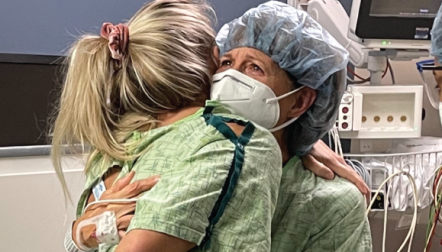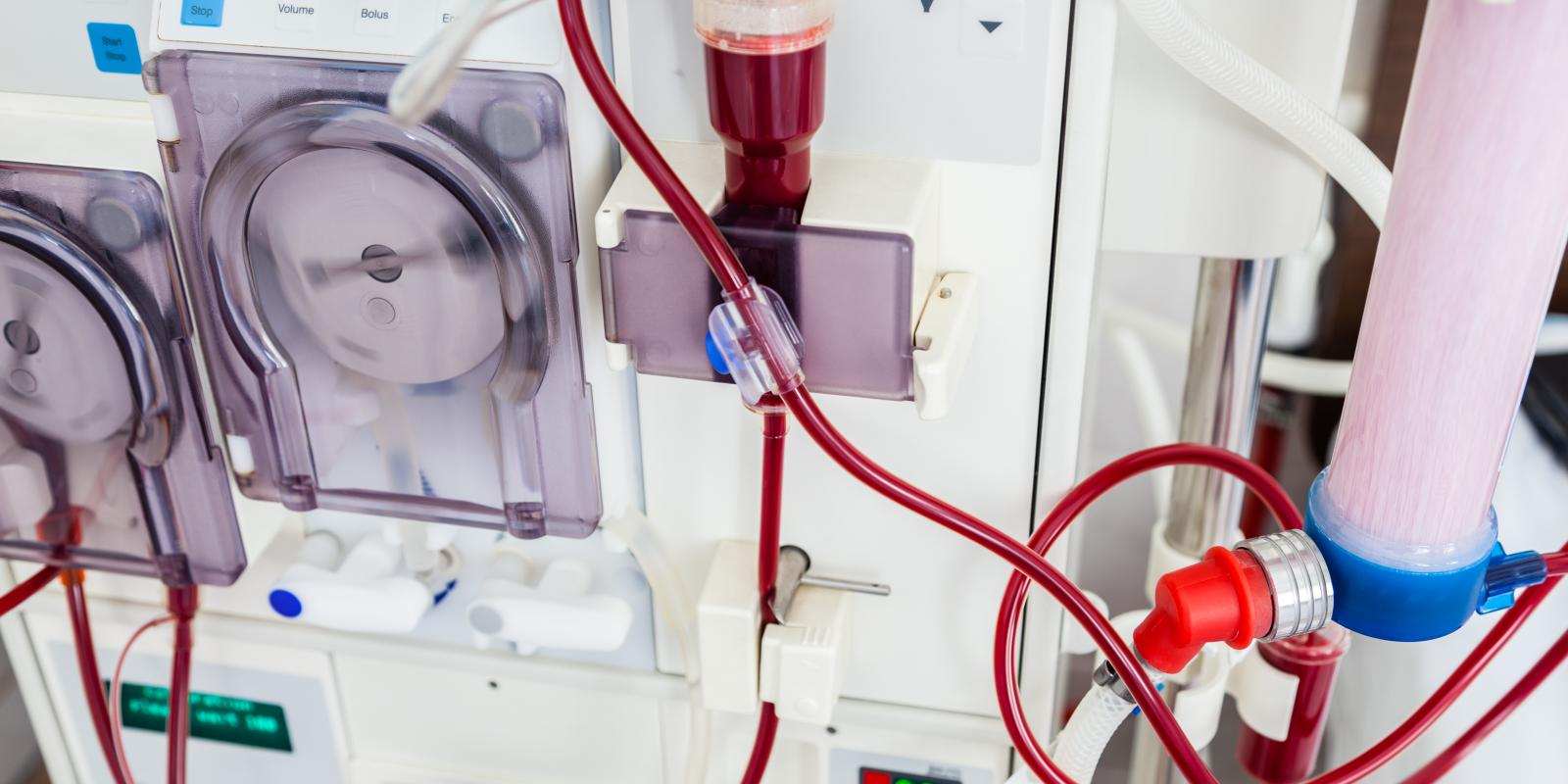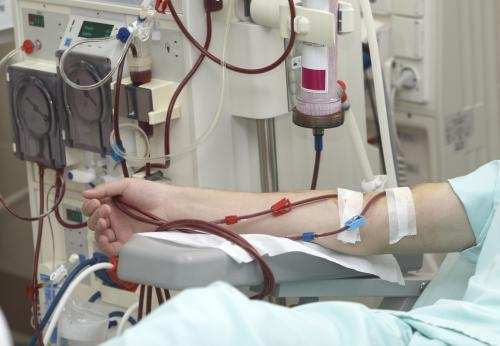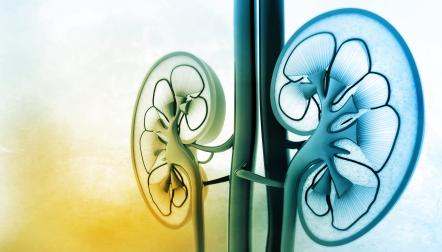
Hemodialysis, a type of dialysis

- Medically reviewed by
- AKF's Medical Advisory Committee
- Last updated
- December 15, 2023
Jump to
Hemodialysis (also called "hemo") is one type of dialysis treatment for kidney failure. It uses a machine to clean your blood.
What happens during hemodialysis?
During hemodialysis, your blood travels through tubes from your body into a dialysis machine. While your blood is in the machine, it goes through a filter called a dialyzer, which cleans your blood by removing some of the waste and extra fluid. Then, the cleaned blood travels through tubes from the dialysis machine back into your body.
To get your blood into the dialyzer, your doctor needs to make an access, or entry, into your blood vessels. This is called vascular access.
How does my blood flow in and out of my body to the dialysis machine?

Before you can begin hemodialysis, you will need minor surgery to get a vascular access. This is a way for your blood to flow in and out of your body to the dialysis machine.
At the start of each hemodialysis treatment, a dialysis technician will place two needles in your arm using the vascular access. Your blood will flow through one needle from your vascular access to the dialysis machine, and then from the dialysis machine back to your body through the other needle.
There are three types of vascular access:
- AV (arteriovenous) fistula: The AV fistula is the safest type of vascular access. It can last for years and is least likely to get infections or blood clots. A surgeon connects an artery (a large blood vessel that carries blood from your heart) and a vein (a blood vessel that carries blood to your heart) under the skin in your arm. Usually, they do the AV fistula in your non-dominant arm. For example, if you are right-handed, you would probably get your fistula in your left arm.
- Because the fistula needs time to heal after surgery, it is best to get an AV fistula two to three months before you need to start dialysis. After two to three months, the fistula will be stronger than a normal artery or vein to allow needles to be put in and taken out many times a week.
- AV graft: An AV graft is the next best vascular access option. It is more likely to have problems with infections and blood clots. A surgeon uses a plastic tube to connect an artery and vein under the skin in your arm. It is best to get an AV graft two to three weeks before you start dialysis.
- Catheter: A catheter is a Y-shaped plastic tube. Catheter users are more likely to have problems with infection, blood clots and scarring. One end of the catheter connects to a large vein that is deeper inside your body. The other two ends come out through your skin. There are two types of catheters:
- A venous catheter connects to a vein in your neck, chest or leg and hangs outside your body from an opening in your skin. If you need to start dialysis right away, your doctor may recommend a venous catheter because it can be placed and used the same day. But it should only be used for short periods of time.
- A tunneled catheter most often connects to a vein in your neck. It is safer and can be used for longer periods of time than a venous catheter.
Talk with your doctor to decide which type of vascular access is best for you. No matter what type of vascular access you get, you must take care of it to protect your health and to make sure it is useful for as long as possible. Learn more about caring for your vascular access.
Where is hemodialysis done?
If you choose to have hemodialysis, you may do your treatments in a dialysis center or at home, during the day or at night. Learn more about choosing a hemodialysis treatment plan.
How much time does each treatment take?
Usually, each hemodialysis treatment lasts about three to four hours and is done three times a week. The time needed for your dialysis depends on:
- How well your kidneys work
- How much waste and fluid builds up in your body between treatments
- Your height and weight
Why do I need to weigh myself when on hemodialysis?
Keeping track of your weight is a good way to know if your body is holding on to too much water. Because your kidneys are not working well, your body may hold on to extra water between dialysis sessions.
Your target weight (also called dry weight) is what you should weigh after you have finished each dialysis treatment. Your doctor will work with you to figure out your target weight.
If you are on hemodialysis, you should also weigh yourself every morning and contact your doctor if your weight is much higher or lower than normal. Remember, how closely you follow your food and fluid plan, and whether you take your medicines correctly, will affect your weight too.
Things to consider when choosing a hemodialysis treatment plan
When you are deciding on hemodialysis and what schedule is best for you, it is important to consider how the treatment will fit with your life. You know yourself and your daily routine best. Taking this into account can help you follow the plan you choose.
This table will help you compare hemodialysis in a center and at home.
Question | In-center | In-home |
How often will I have treatments? | Most people have three treatments each week. This can be during the day or at night. | Most people have four to six treatments each week. Some people choose to do them at night, about every other night. Your doctor will help you create a schedule that is best for you. |
Will I have to change the way I eat? | You will need to be stricter with limits on certain foods. If you know that this may be hard for you, a treatment plan that requires such limits might not be right for you. | If you do your treatments every day, you may be able to be less strict with your meal plan. |
Can I keep working while on hemodialysis? | Yes, but you will have to schedule work or school around the time you need to travel to the dialysis center and get treatment. | Yes, and because you do not have to travel to a dialysis center, you will have more flexibility to fit dialysis into your daily schedule. |
Can I travel while on hemodialysis? | Yes, but you need to plan for it. You can do your treatment sessions at a dialysis center in the city you are visiting. However, there may be a copay. | Yes, but you need to plan for it. Certain machines are small enough that you can bring your dialysis machine with you on your trip. You will also need a trained care partner to help you with each treatment. |
What else should I know? | You will:
You may have less privacy and comfort compared to being in your own home during treatment. | You will:
You may need to make changes in your home to prepare, such as changes to the plumbing and electric. |
What else should I know?
You will:
- Have skilled dialysis team members to do your treatments
- Have more chances to ask questions
- Need reliable transportation to and from the dialysis center
- Have a support system of other people who are getting treatments with you
You may have less privacy and comfort compared to being in your own home during treatment.
You will:
- Need training to learn how to do your treatment
- Need support at home
- Need to make changes in your home to prepare, such as to the plumbing and electric
- Need to make space for your equipment and supplies
- Have the comfort and privacy of being in your own home during treatment
You may need to make changes in your home to prepare, such as changes to the plumbing and electric.
Questions to ask your doctor
Talk with your doctor about which treatment would work best for you, your loved ones and your schedule. Here are some questions you may want to ask your doctor:
- What type of vascular access would be best for me?
- What is my target weight?
- How often and for how long do I need to have hemodialysis?
- What type of hemodialysis is best for me, given my travel, work and the activities I enjoy?


